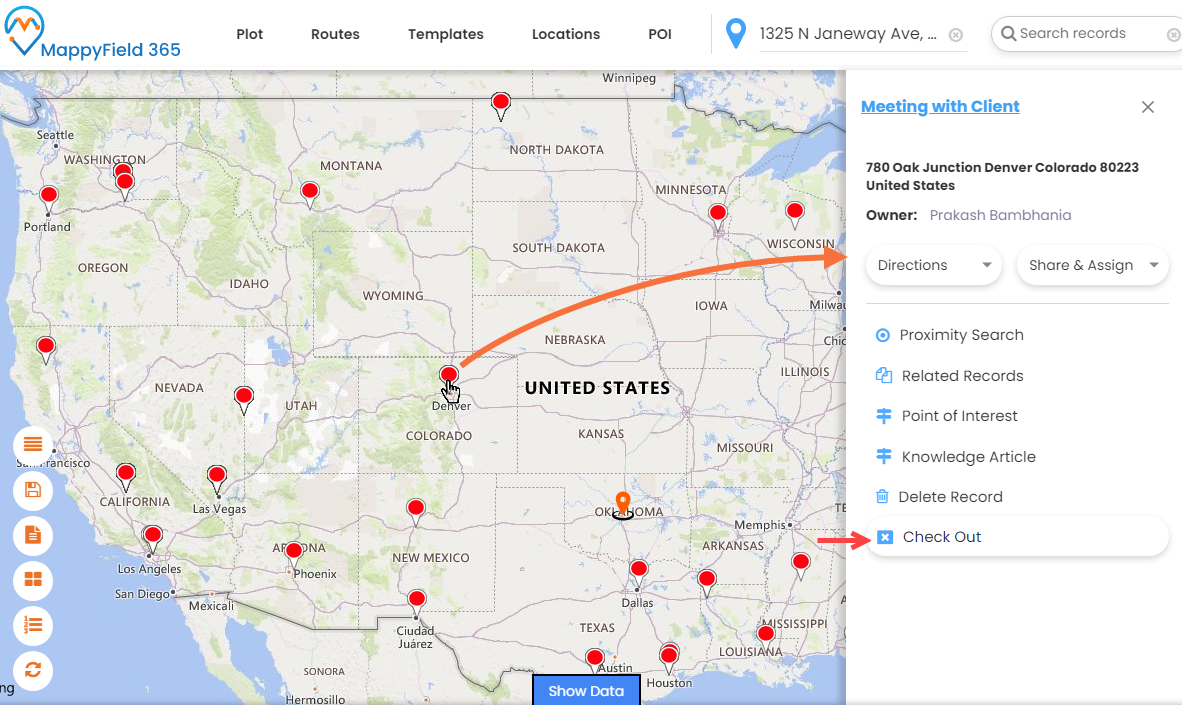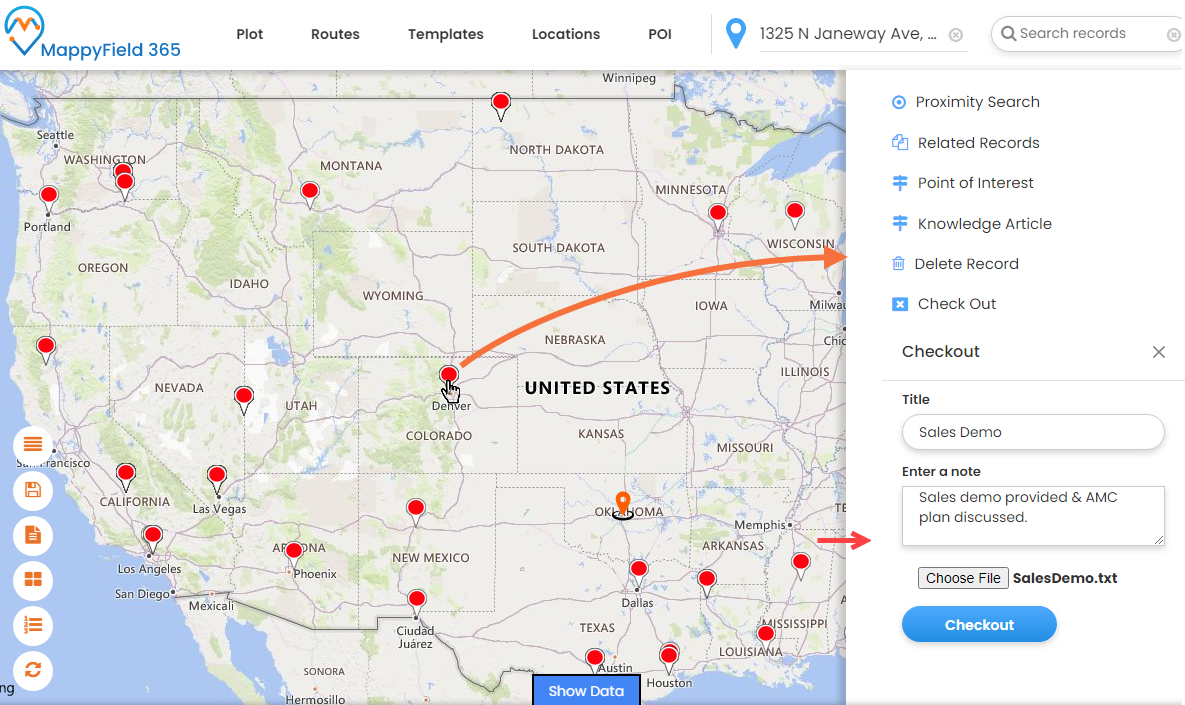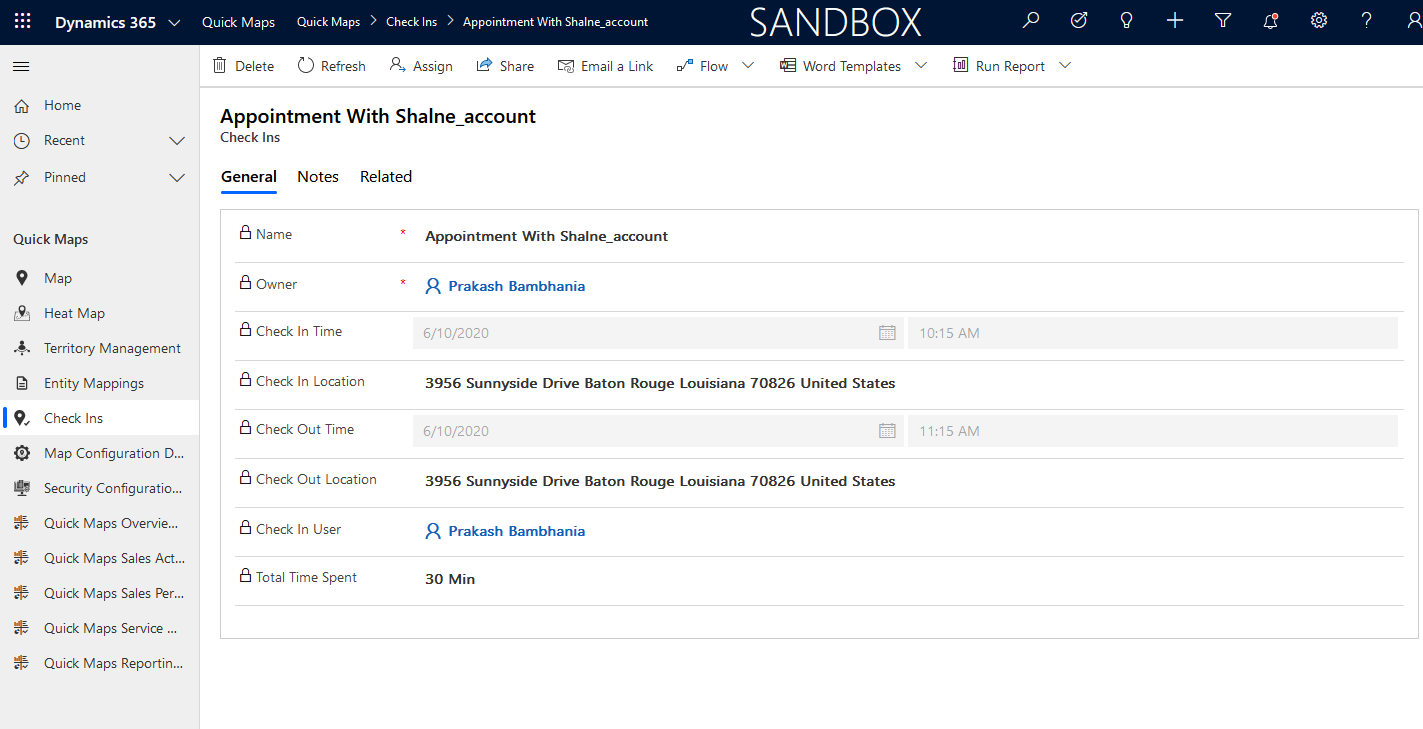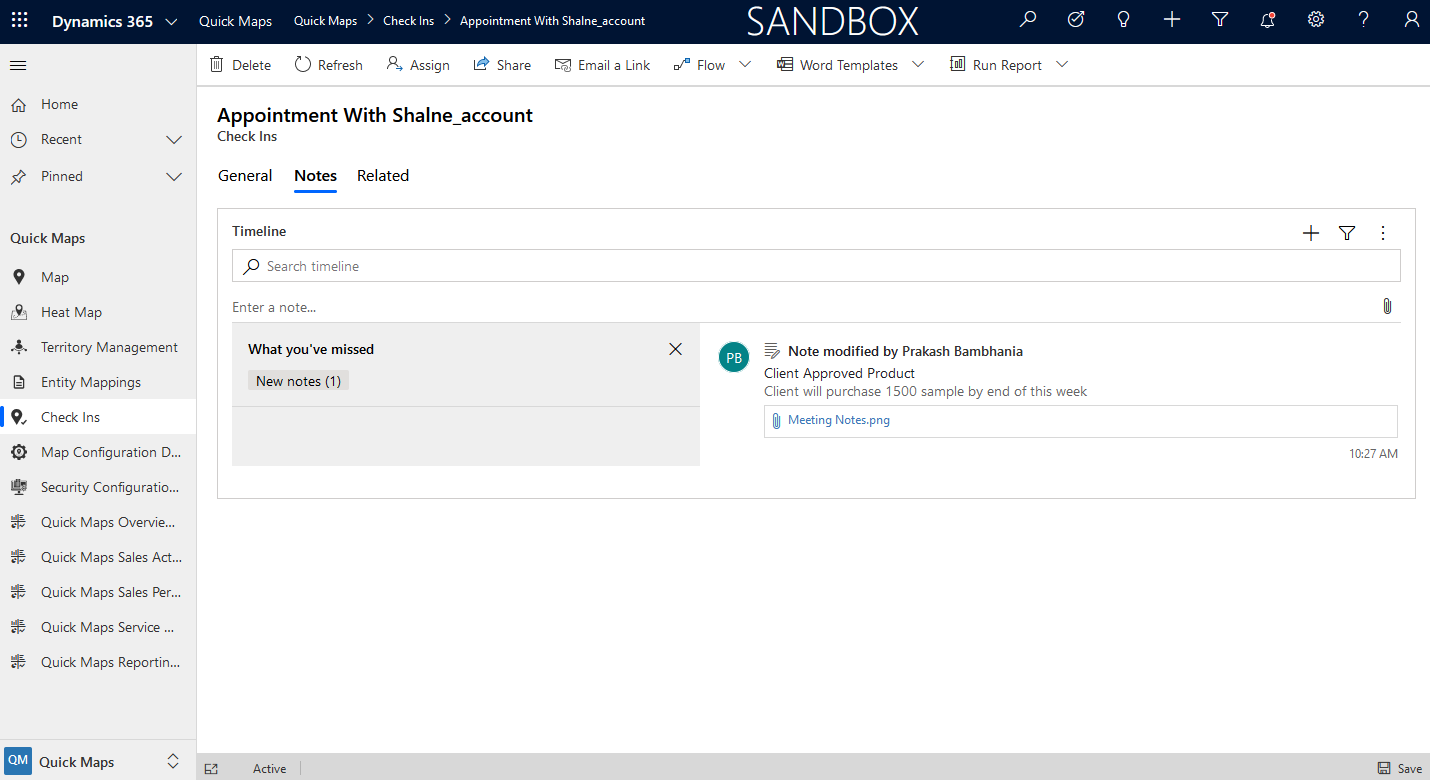How to Manage and Track Activities from Dynamics 365 Mapping Tool
Managing the appointments and the task for the Sales Reps & Service Executives is always challenging. Being a Field Sales Manager knowing when and where your team members are going to meet the customers is crucial to achieving your sales targets.
So, in this blog, we are going to demonstrate how your sales reps and executives can manage their meetings and how you as a manager can keep track of all their activities from Dynamics CRM.
For this, you will need to integrate a Dynamics 365 mapping tool with features like check-in, check-out, heat map visualization, territory management, etc. You can browse around MS AppSource to find the right tool that suits your need but for demonstration purposes, we’ve taken Quick Maps in this article.
So, let’s see how your sales reps can Check-in & Check-out of all activities like Appointment, Task, Campaigns, Services, etc.
For Sales Reps:
Step 1: Navigate to Map
If you are using old UI (Classic view):
Find the “AppJetty” tab from the header menu, navigate to Quick Maps and then click on Map.

OR
If you are using Unified view:
You can find the ‘Quick Maps’ App by clicking on the Dynamics 365 option.

Step 2: Check-in configurations: Enable, set radius, and enable check-in for the entity (activity)
- Navigate to Entity Mappings to enable the Check-in for the activities (i.e. Appointment, Task, Campaign, etc.)

- Click on any activity to enable the Check-in option and Edit it.

- Check the checkbox of the “Enable Check-In” option for that activity. After checking the checkbox, click on the Update button by scrolling down.
- Navigate to “Map Configuration Details” and select the user(s) you want to enable check-in for.
In the “Map Configuration Details” page, set Check in to “Yes” and set Check-In Radius (KM). This Geo Radius will allow the user to check-in within the set radius. Ex. If the check-in radius is set to 20 KM, the Sales Executive can only check-in to the activity when the executive is in the radius of 20 KMs of the record.

Step 3: Redirect to Map and plot activity data.
- Once you enable & configure the Check-in option, navigate to Maps, and plot the records by selecting the activity entity for which you have enabled the ‘Check-in’ Feature.
- Once records are plotted on the maps, click on the pushpin to view the details of that record. By clicking on it, the popup of the detail view will appear. Here, the user will get the ‘Check-in’ button.

Once the Sales Executive completed the appointment meeting with the customer, that executive can again click on that record to check out. Only if the Sales executive has checked-in, then they will get the Check Out button.

- By clicking on the Check-Out button, a popup of Checkout details will appear to add meeting notes and attachments if any related to the meeting.

- By clicking on the Checkout button, the details of the check-in & check-out will be saved.
- You can check the details from the Check-In menu of Quick Maps.
For Sales Managers:
Step 1: View Check in check out details to analyze the meeting data.
Navigate to Check-in menu available in Quick Maps and click on check-in record to view the details.

- By clicking on any check-in record, you will get the Check-in & Check-out details with the time spent for the meeting.
- You can view all the details regarding that Check-in & Check-out with inserted notes or attachment if any. You can take actions accordingly. These notes will also be added in related activity detail.

In this way, your Sales Reps can easily manage their activities and you can easily track the amount of time spent by Sales Reps on a particular activity to streamline your operation and eliminate unnecessary elements.
Source:https://www.appjetty.com/blog/how-to-manage-track-activities-dynamics-365-mapping-tool/


Comments
Post a Comment